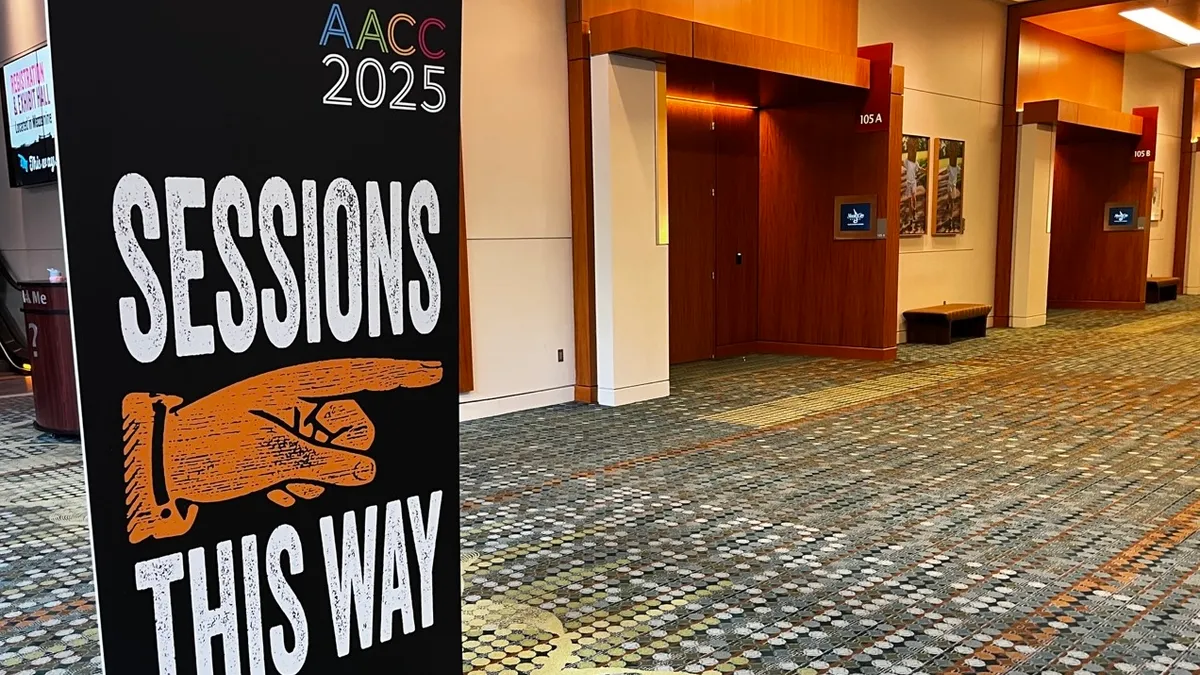Well-intentioned remedial education courses, and the testing that too often imprecisely places students in them, may be doing more harm than good.
That's according to a surge of research and exploratory initiatives that suggest colleges could replace them with a mix of assessment methods and alternative supports to move students ahead while catching them up.
"Developmental education was designed to help students, but it didn't really work," said Christopher Mullin, director of Strong Start to Finish, a college access advocacy group that works with institutions to improve remedial education. "Now there is a lot of energy out there to find a better alternative."
The research is extensive and straightforward. Although about half of first-year students are found to require remedial classes in either math, English or both, the assessments colleges use to make that decision vary widely and don't always reflect students' potential success with college-level coursework.
In one case, researchers found that about one-fourth of students in remedial math and one-third in remedial English were "severely mis-assigned" to the courses using common test-based methods, and that many could have earned at least a B in a regular college course.
What's more, students who take remedial classes are generally less likely to graduate within six years than are their peers who didn't take such courses.
"Traditional approaches to college preparedness are increasingly scrutinized because their outcomes are poor, by and large," said Patrick Partridge, president of WGU Academy, the new remedial education platform offered by Western Governors University, one of the nation's biggest online colleges.
They're also costly. Research puts the total annual expense to students and families at $1.3 billion and to colleges at $7 billion.
Using 'multiple measures'
Although test scores determine most remedial class placements, low-risk students often thrive when other factors — particularly a combination of them — are used instead. Those tend to include GPA, college entrance exams and work experience.
"For some time, we knew the two primary assessments (the ACT's Compass and the College Board's Accuplacer) for placement into remediation were not doing a very good job of predicting how students would do in college courses, and we had been thinking about other information we could use," said Sarah Truelsch, director of policy research at the City University of New York (CUNY).
The system has been a leader in trying new ways to assess, place and boost struggling students as they enter college. "We found that even high school grades were much more closely aligned with success in college," she said.
Starting this fall, CUNY will use an algorithm to evaluate students and recommend them to different developmental education options. The algorithm factors in a student's high school grades and scores on the SAT and state Regents Examination to determine whether they would need extra support to succeed in a regular credit-bearing course.
As of December, 19 states used some combination of high school grades, standardized tests, college entrance exam scores, work experience and even apparent grit to place students. And reports from states and systems using such measures indicate they're working.
Public institutions in Arkansas have had success developing alternatives to a lone remedial test score as a placement mechanism, Mullin said. They are working with Strong Start to Finish to find alternatives to placement and supports for students after the state mandated them to do so.
"Placing students more accurately by collecting and examining more student data is one simple step colleges and systems can take," said Mike Leach, director of the Center for Student Success at Arkansas Community Colleges.
At Arkansas Tech University, using a combination of GPA and ACT and Accuplacer scores helped reduce the number of students in remedial classes from 1,032 in 2017 to 794 in 2018. The pass rate of the students who took remedial classes rose from 51% to 55% during that time. Other supports were offered, including academic advising, supplemental instruction and mentorship.
Since January 2018, the California Community Colleges System has been operating under legislation that requires its institutions to use multiple measures for some course placement.
Data on the impact of the new legislation will be released next month, said Alice Perez, vice chancellor for academic affairs at the California Community Colleges, in an email to Education Dive. However, early findings from the Public Policy Institute of California are hopeful. It found more students are entering and completing transfer-level courses.
"Most students who enter a community college never complete a degree or certificate or transfer to a four-year university," Perez said. "These changes are imperative to increase degree and certificate attainment, workforce outcomes and transfers." She added that changes made through the legislation, state Assembly Bill 705, "represent a significant step forward."
Embedding support
Beyond more carefully deciding which students require remedial classes, states and colleges are looking to incorporate that education into credit-bearing curriculum to help students graduate on time and without extra cost.
In 2015, Tennessee became the first state to drop traditional stand-alone remedial courses, The Chronicle of Higher Education reported, in favor of a corequisite model. Now offered nationwide, this approach places students in a college-level class with the support of a tutor or another class dedicated to reviewing core concepts.
Two years later, Texas passed a bill requiring 75% of students in remedial education as of the 2020-21 academic year to be in corequisite courses.
Last fall, the California State University System announced it is replacing its traditional remedial classes with two-semester-long versions of credit-bearing courses, taken alongside a support class.
The Los Angeles Times reported in February that some 7,800 California State University students who would have been required to take remedial math avoided it under the new guidelines and passed a regular math class last fall. That's up from just 950 who did so the prior year.
Florida saw positive results, particularly for minority students, after it began allowing some students to forgo remedial classes and changed how such curriculum is structured. Enrollment in developmental courses dropped while it increased in introductory level classes as a result of the change, in 2014, explains the Center for Postsecondary Success. What's more, black and Hispanic students saw a bigger jump in credit attainment than did white students as a result of the change.
"Most students who enter a community college never complete a degree or certificate or transfer to a four-year university. These changes are imperative to increase degree and certificate attainment, workforce outcomes and transfers."

Alice Perez
Vice chancellor for academic affairs, California Community Colleges
CUNY takes a different approach. Students flagged as needing support can choose between two preterm intensive programs.
One, CUNY Start, combines tutoring in reading, writing and math, as well as advising and college preparedness training, in a course that runs up to a semester in length before a student formally enrolls. The other, Math Start, is offered as an eight-to-10-week program focused on math. At $75 and $35, respectively, the programs are priced to not cut into student aid.
They also are designed to feed students into CUNY's ASAP program, which itself aims to help students efficiently complete associate degrees. The program has been successful at graduating students, and other institutions have since copied its approach.
Another alternative, Mullin said, is putting students in introductory math courses that align with their majors, such as statistics or quantitative reasoning.
Others, like CUNY, are compressing developmental courses into intensive, typically low-cost packages. For instance, Virginia's community college system integrated its remedial reading and writing courses into a single class, tiered based on ability level.
"We're seeing success in a number of places with a variety of strategies," Mullin said. "Now, the goal is to determine what works best and scale it."





















